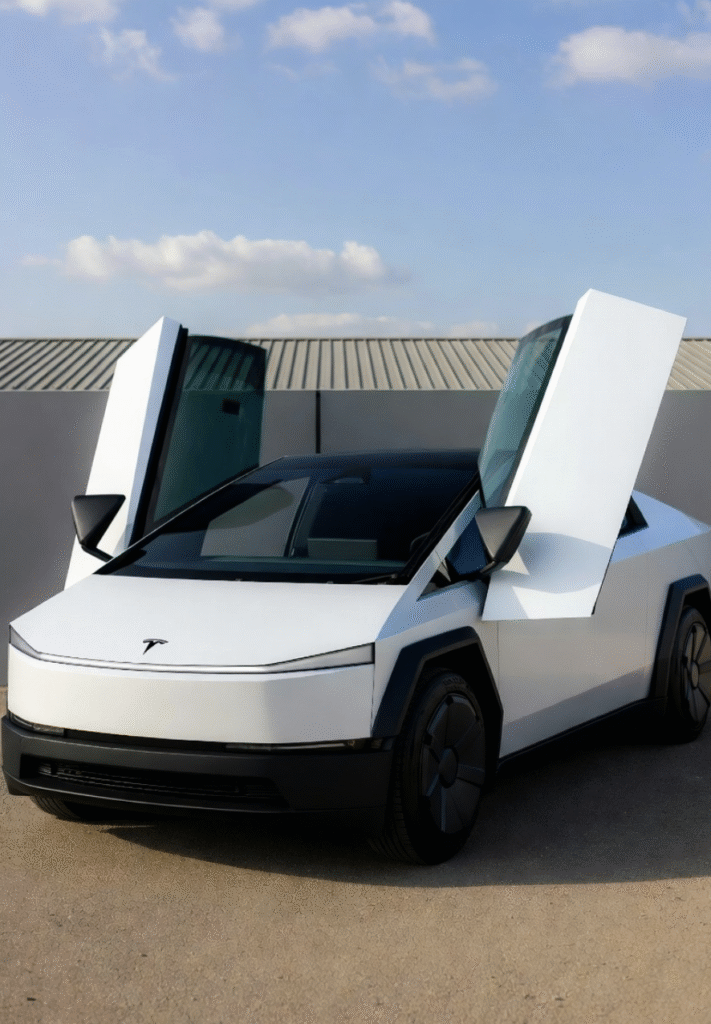Introduction
Tesla Robotaxi updates 2025 are accelerating, with the company pushing toward a full rollout of its autonomous ride-hailing service. Building on the Cybercab unveiling in October 2024, Tesla Robotaxi updates 2025 include software enhancements, regulatory progress, and production scaling. This article explores the latest Tesla Robotaxi updates 2025, focusing on FSD advancements, fleet deployment, and market implications, based on Tesla’s announcements, Electrek reports, and Elon Musk’s X posts.

FSD Software and Unsupervised Driving
Tesla Robotaxi updates 2025 center on Full Self-Driving (FSD) version 13, which achieved a milestone in Q3 with 1.5 million miles per critical intervention. Musk’s X post from September 2025 confirmed unsupervised FSD testing in Austin, with Tesla Robotaxi updates 2025 targeting Level 4 autonomy by Q4. The software now handles complex urban scenarios, including unprotected left turns and pedestrian interactions, as demonstrated in Tesla’s internal videos. These Tesla Robotaxi updates 2025 are crucial for the ride-hailing network, with FSD 13.2 rolling out to 100,000 vehicles by year-end.
Production and Fleet Scaling
Tesla Robotaxi updates 2025 include the Cybercab’s unboxed manufacturing process, enabling 2 million units annually by 2027. Production at Giga Texas is ramping, with initial Cybercab units expected in Q2 2025 for employee testing. The Tesla Robotaxi updates 2025 fleet will start with 1,000 units in California and Texas, expanding to 10,000 by Q4, per Musk’s earnings call. The $25,000 price point, combined with inductive charging, positions the Robotaxi for mass adoption, with Tesla Robotaxi updates 2025 focusing on cost reduction to $0.20 per mile.
Regulatory and Safety Progress
A key part of Tesla Robotaxi updates 2025 is navigating regulations. The NHTSA approved FSD for public roads in select states, with California DMV granting permits for unsupervised operation in San Francisco. Tesla Robotaxi updates 2025 include a safety score of 5.5 stars in internal tests, surpassing human drivers. Musk addressed concerns on X, emphasizing data from 10 billion miles of FSD driving. These Tesla Robotaxi updates 2025 pave the way for commercial launch, with insurance partnerships reducing liability risks.
Market Impact and Competition
Tesla Robotaxi updates 2025 could disrupt the $1.5 trillion ride-hailing market, with projections of $1 trillion in annual revenue by 2030. Competitors like Waymo (50,000 rides/week) and Cruise face setbacks, giving Tesla an edge. The Tesla Robotaxi updates 2025 network will integrate with the Tesla app, offering $0.30–$0.40 per mile fares, undercutting Uber. Analysts from Ark Invest forecast 90% of Tesla’s value from Robotaxi by 2029, boosting the Tesla Robotaxi updates 2025 narrative.
Challenges and Future Roadmap
Tesla Robotaxi updates 2025 face hurdles like regulatory delays in Europe and sensor costs. Musk acknowledged in the Q3 call that full rollout depends on FSD reliability, with Tesla Robotaxi updates 2025 including hardware upgrades for the Cybercab. Supply chain issues for 4680 batteries may push volume production to 2026, but internal testing in Austin mitigates risks.
Conclusion
Tesla Robotaxi updates 2025 are transforming autonomous mobility, with FSD 13, Cybercab production, and regulatory wins leading the charge. As Tesla scales its fleet, the impact on transportation will be profound. Stay tuned to EnergyFutureAI for more on Tesla Robotaxi updates 2025. For related insights, see our article on Tesla’s Q3 Earnings Reaction 2025: What It Means [https://energyfutureai.com/tesla-q3-earnings-reaction-2025].
Sources: